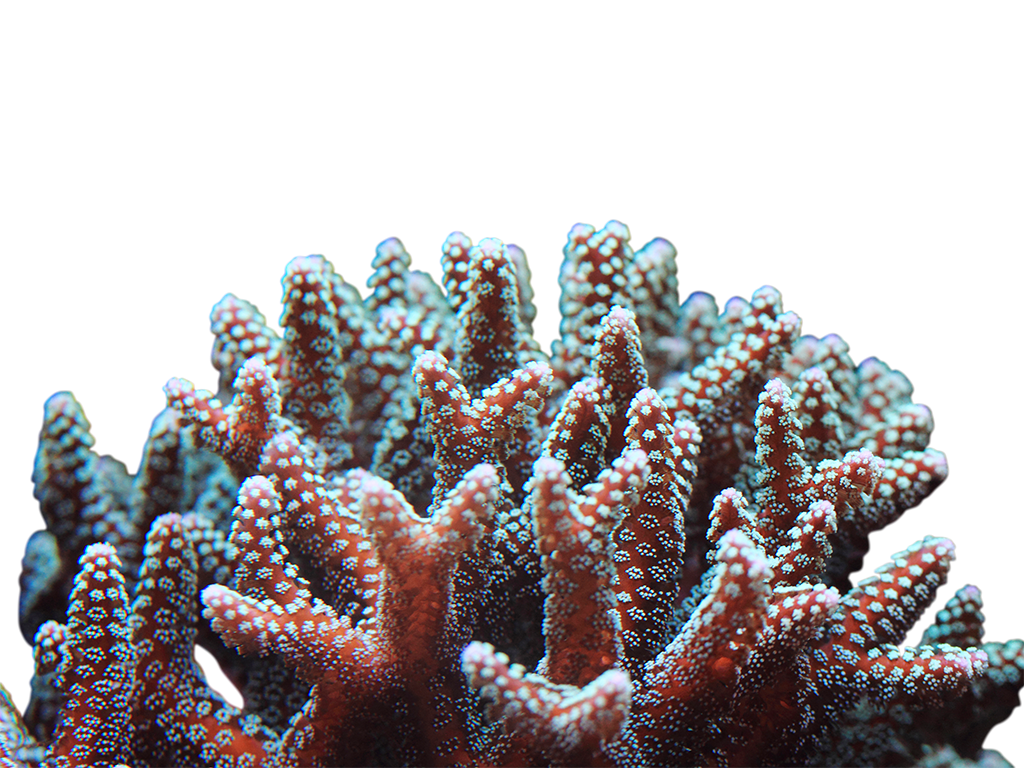Stony corals

The foundation for coral reefs
Stony corals have hard skeletons, which they build from the calcium they absorb from seawater. Corals depend on high levels of calcium in the water in order to develop sturdy skeletons. Corals live in the oceans across large parts of the world. They are most common in tropical waters, but also inhabit the Swedish waters off Bohuslän.
Stony corals play an important role in the building of coral reefs, as they form hard calcareous skeletons that remain even after the coral has died. Stony corals come in many different shapes, such as branching, rounded, disc-shaped or lumpy. For example, stony corals living in colonies may resemble a brain or moose antlers.
The hard skeleton of the stony corals are what makes the foundation of the world's coral reefs.
Photo: Toby-Hudson-CC-BY-SA
The coral reefs have lots of hiding places for many different species.
Photo: Nick-Hobgood-CC-BY-SA
Acropora corals can resemble antlers of deers.
Photo: MDC-Seamarc-Maldives-CC-BY-SA
A stony coral with a surface that resembles a brain.
Photo: Ryan-McMinds-CC-BY
There are many different structures of stony corals.
Photo: Ryan-McMinds-CC-BY
Stony corals can grow like bracket fungi, or large patches of lichen.
Photo: Williams-et-al.-CC-BY
The hard calcium skeleton of the anemone coral hides under its long, soft tentacles.
Photo: Bernard-DUPONT-CC-BY-SA
Fungia corals in Indonesia.
Photo: Bernard-DUPONT-CC-BY-SA
A species of cold water coral with an astonishing way of growing. It lives on depths down to 1,500 meters.
A stony coral growing in a round, lumpy way.
Photo: Diego-Delso-CC-BY-SA
Algae are common inhabitants
Stony corals belong to the class Anthozoa, and there are about 2,500 species. A coral is usually a whole colony of small polyps, each of which is a separate individual – often copies of each other. Polyps have a sack-like body protected by an outer calcareous skeleton. Stony corals usually, but not always, live in large colonies.
Many species of stony corals live in symbiosis with so-called zooxanthellae, a type of single-celled algae. Zooxanthellae live inside the polyps. They contribute to the energy supply of the coral and depend on sunlight penetrating deep into the water to survive. Stony corals in colonies are harder and more resilient than those living alone. But the stony corals that live alone can be found as deep as 6,000 metres! Deep-dwelling corals get their food from eating plankton that float by in the water.
Each polyp is an individual animal, together creating a coral colony.
Photo: Peter-Young-Cho-CC-BY-SA
The coral polyp's mouth is located in the middle of the animal.
Photo: Justin-Casp-CC-BY-SA
Small, partly extracted polyps.
Photo: David-Witherall-and-Pete-Morrison-CC-BY
Tiny polyps with even smaller tentacles.
Photo: Narrissa-Spies-CC-BY-SA
A recently attached polyp. The brown dots are the inhabitant algae of the coral - zooxanthellae.
Photo: Narrissa-Spies-CC-BY-SA
The most common algae living inside corals are zooxanthellae. The photo shows zooxanthellae seen through a microscope.
Photo: Tim-Wijgerde-CC-BY-SA